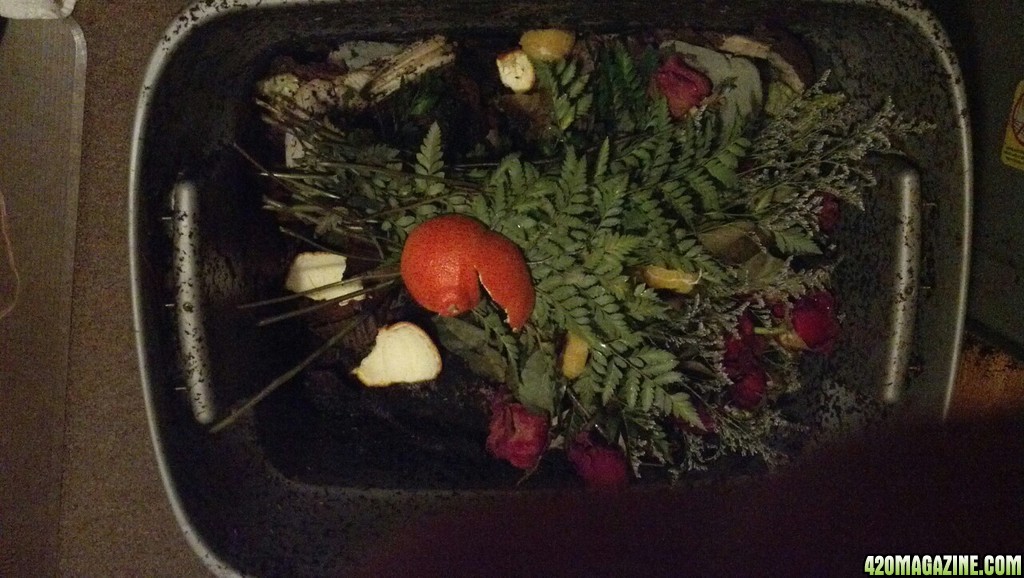We all know worm castings are a great soil amendment. It increases water holding capacity and is rich in micro organisms. Whether you just enjoy it for a hobby or don't care to pay up to 5.00 a pound for worm poop, you can follow these easy steps for a worm poop factory any gardener can be proud of.
1. Get two of those Suncast, Rubbermaid, or whatever storage tubs
2. Bin A: Put holes around the top and the bottom of it. I burned the holes in using a soldiering iron (be sure there is ventilation) or you can use an 1/8 inch drill.
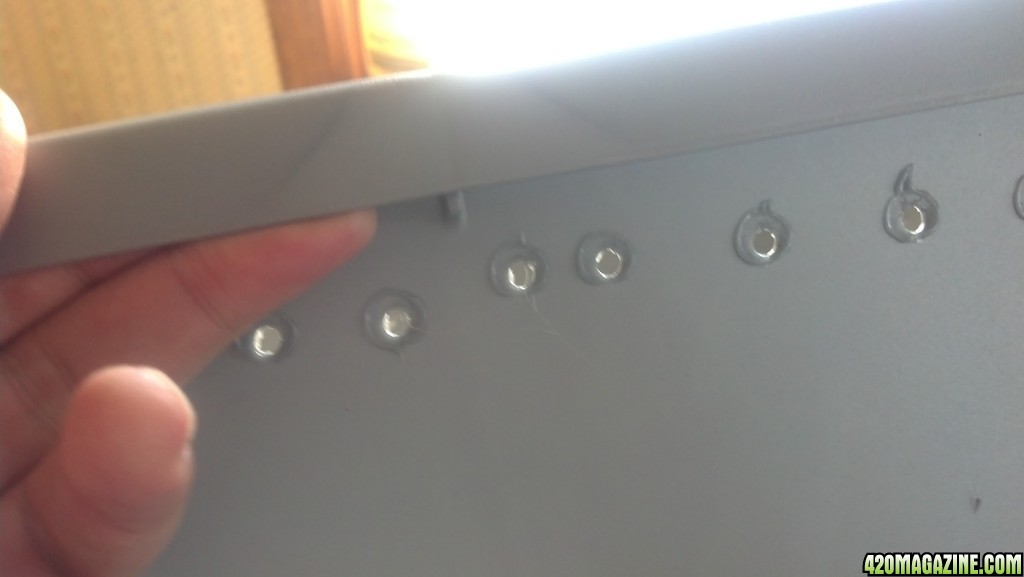
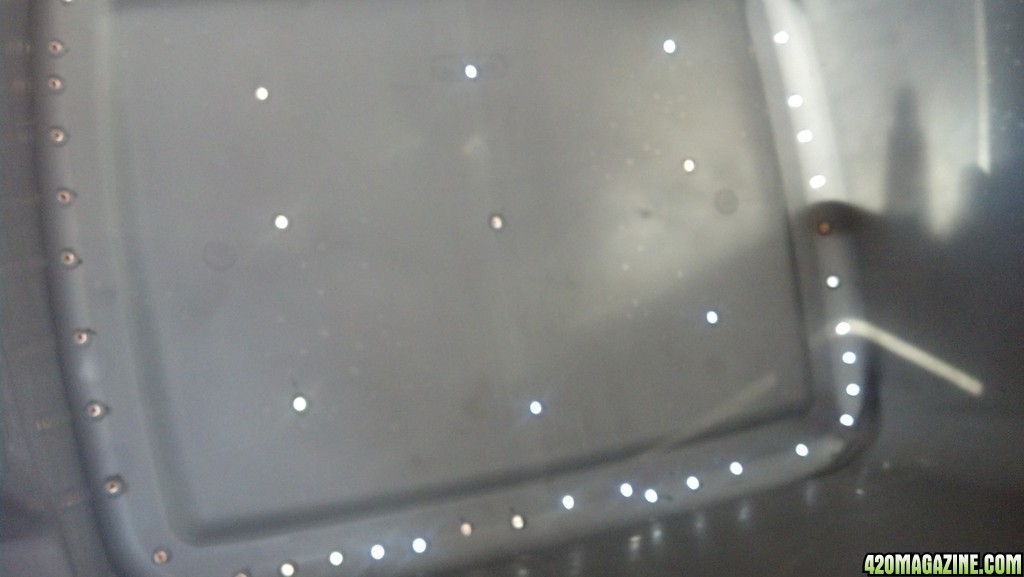
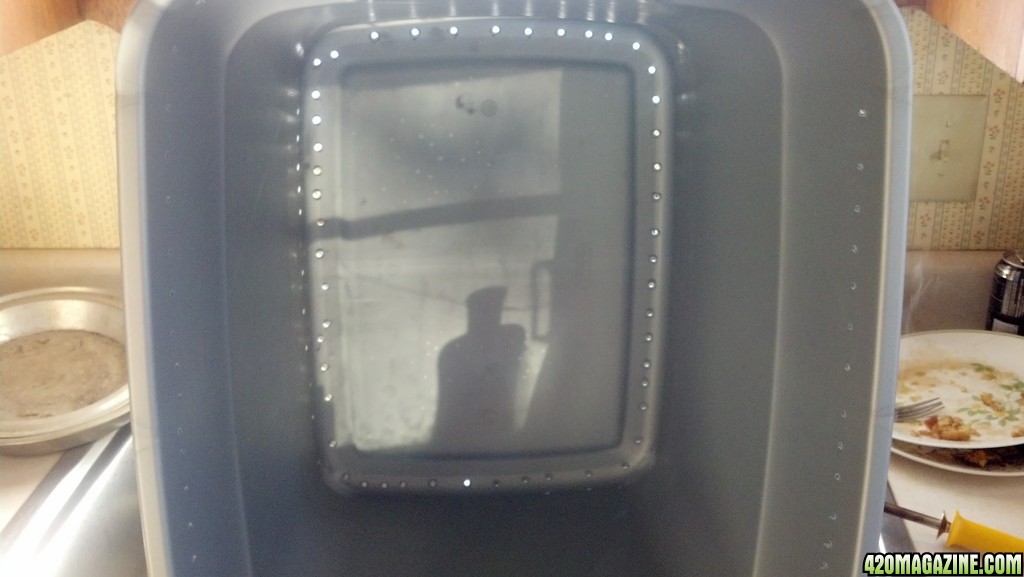
The holes around the top are to get oxygen to your worms. The holes in the bottom of the tub are for the castings to fall through.
3. Bin B: your not doing anything to this one. It stays as is. Put something in the bottom so it holds bin A up a little. You can use rocks or whatever. I repurposed this cottage cheese container.
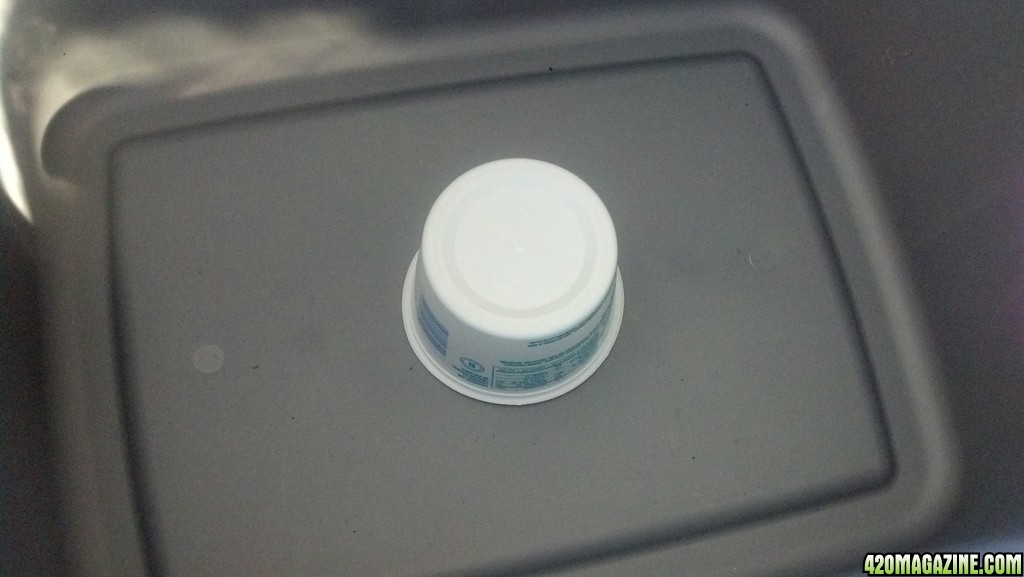
4. Insert bin A into bin b. Notice how it doesnt sink down in the container all the way? that's because the object, in this case the cottage cheese container holds it up a bit. This alows air flow through the holes in the top and room for the castings dripping out the bottom.
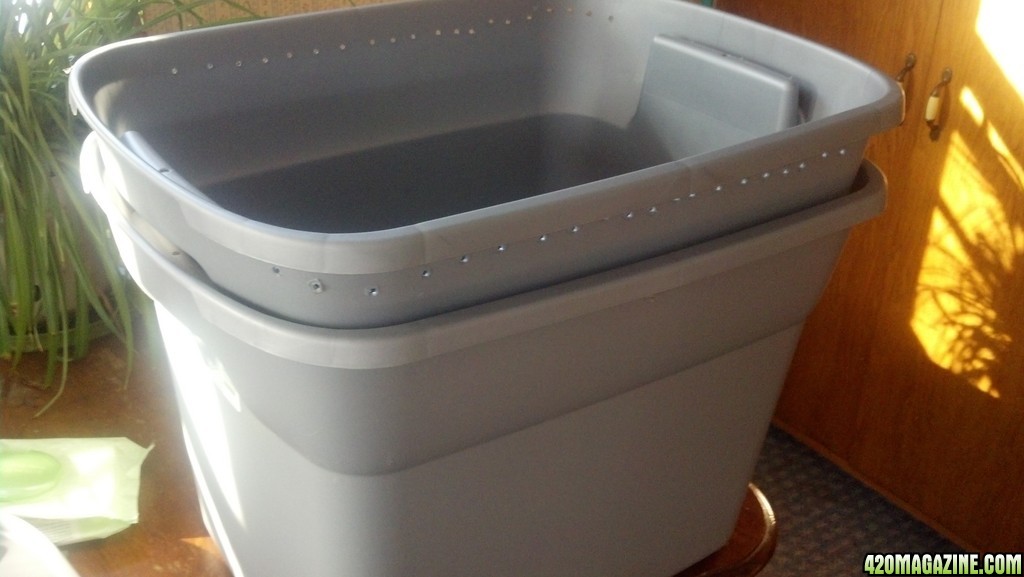
5. Time to get your bedding ready. Take all your junkmail, carboard boxes, shredded paper and put it in a container. Get it good and wet. Then put it into the bin. I also put in the coffee grounds from all those Kuerig k cups I've been saving. Worms like coffee grounds, as a matter of fact the worms I bought came in a bowl of coffee grounds.
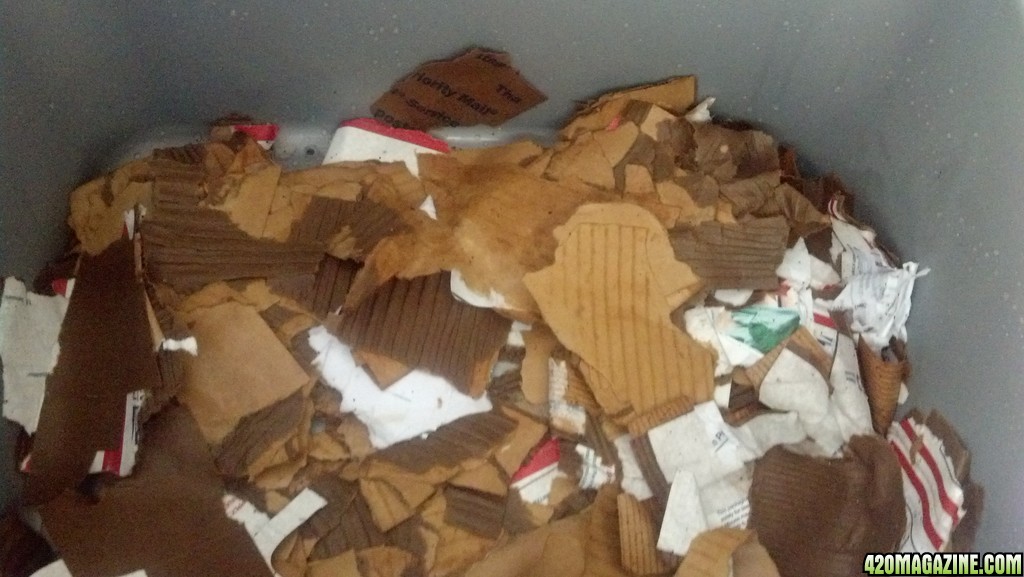
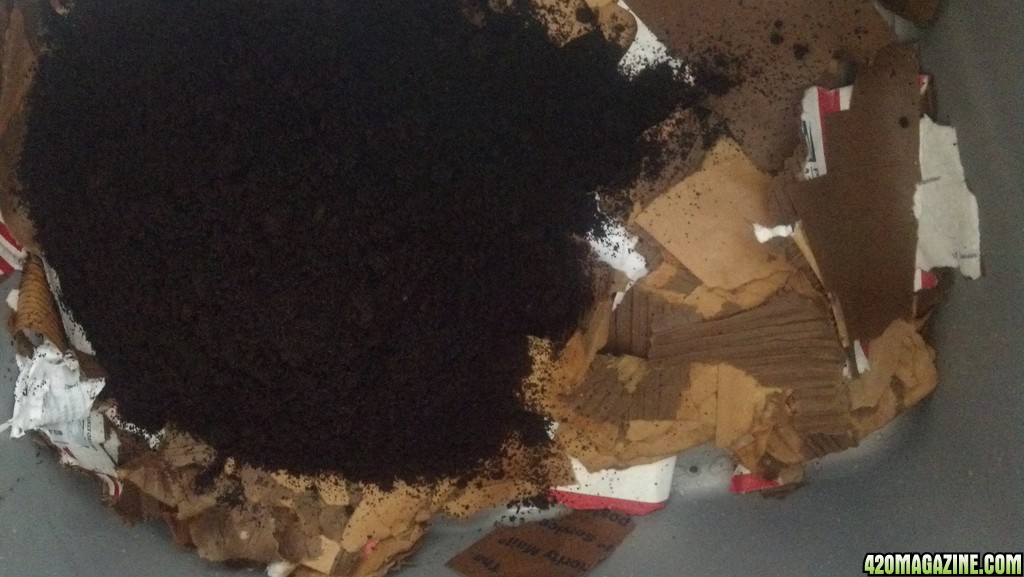
6. You can buy worms for 30.00 on Amazon, or do what I did and buy angling worms at the bait shop. Angling worms are just red wigglers. These were 3.00 for two dozen.
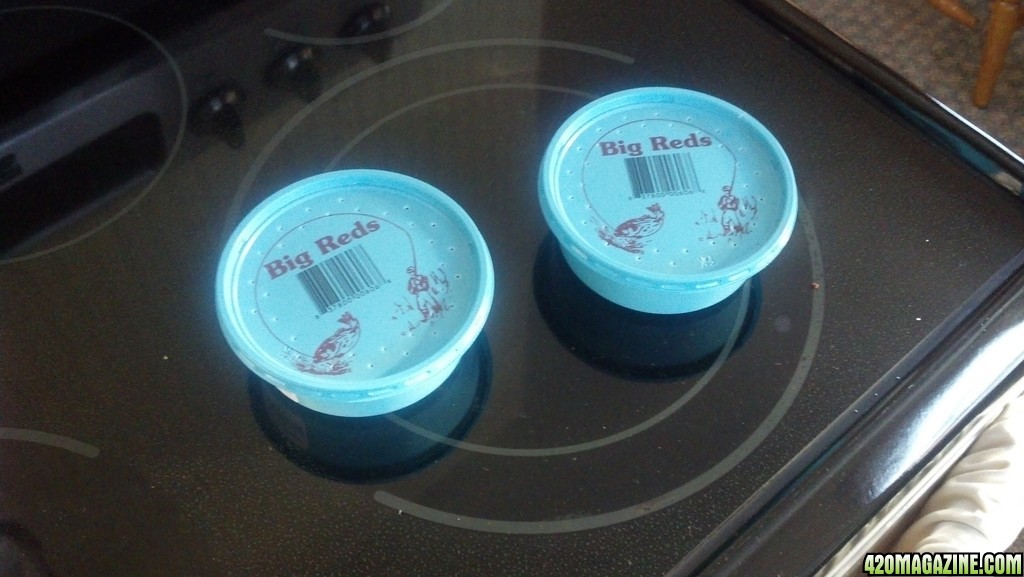
At this point you can put it in a cool spot between 55 and 65 degrees. These worms like grain, fruits and veggies. If your not sure if you should give them something, better research first. For example they do not like oily foods or meat, they also don't like onions.
It's a bit of work, it took me about 1/2 hour. But these little guys are low maintenance. They just want to be kept moist, get some air, and to have something to eat once in awhile. Don't forget to put the lid on, worms like it dark. Add matter as needed to keep your colony happy.
They will reward you with class A humus in return.
-Bud Grant
1. Get two of those Suncast, Rubbermaid, or whatever storage tubs
2. Bin A: Put holes around the top and the bottom of it. I burned the holes in using a soldiering iron (be sure there is ventilation) or you can use an 1/8 inch drill.



The holes around the top are to get oxygen to your worms. The holes in the bottom of the tub are for the castings to fall through.
3. Bin B: your not doing anything to this one. It stays as is. Put something in the bottom so it holds bin A up a little. You can use rocks or whatever. I repurposed this cottage cheese container.

4. Insert bin A into bin b. Notice how it doesnt sink down in the container all the way? that's because the object, in this case the cottage cheese container holds it up a bit. This alows air flow through the holes in the top and room for the castings dripping out the bottom.

5. Time to get your bedding ready. Take all your junkmail, carboard boxes, shredded paper and put it in a container. Get it good and wet. Then put it into the bin. I also put in the coffee grounds from all those Kuerig k cups I've been saving. Worms like coffee grounds, as a matter of fact the worms I bought came in a bowl of coffee grounds.


6. You can buy worms for 30.00 on Amazon, or do what I did and buy angling worms at the bait shop. Angling worms are just red wigglers. These were 3.00 for two dozen.

At this point you can put it in a cool spot between 55 and 65 degrees. These worms like grain, fruits and veggies. If your not sure if you should give them something, better research first. For example they do not like oily foods or meat, they also don't like onions.
It's a bit of work, it took me about 1/2 hour. But these little guys are low maintenance. They just want to be kept moist, get some air, and to have something to eat once in awhile. Don't forget to put the lid on, worms like it dark. Add matter as needed to keep your colony happy.
They will reward you with class A humus in return.
-Bud Grant



